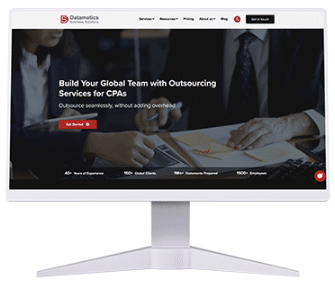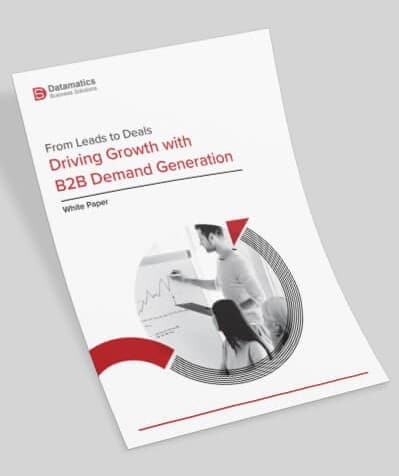It’s 9 a.m. You’ve just settled into your desk, coffee in hand, ready to make the sales calls to drive your B2B business to new heights. You’ve got your script ready, your value propositions polished, and your CRM full of leads. But despite all the prep, you hit a roadblock. Some of your leads go cold, and some even ghost you after what you thought were solid conversations. You’re frustrated, confused, and asking yourself: “Why isn’t this working?”
You're not talking to the right people in the right way!
B2B sales have changed. The decision-making process is a group effort. The age of the lone decision-maker is over. Companies now rely on buying groups, individuals from various departments collaborating to make purchasing decisions. Focusing on just one person to close the deal misses the bigger picture.
This is the new reality of sales. And if you don’t adapt, your sales pipeline will keep drying up, leaving you scrambling to find your next big deal.
By understanding how buyer groups work and learning how to acquire them, you’ll tap into a goldmine of opportunities that many of your competitors haven’t even noticed. Buying group marketing is the key to unlocking more sales, bigger deals, and faster growth. And it’s easier than you think.
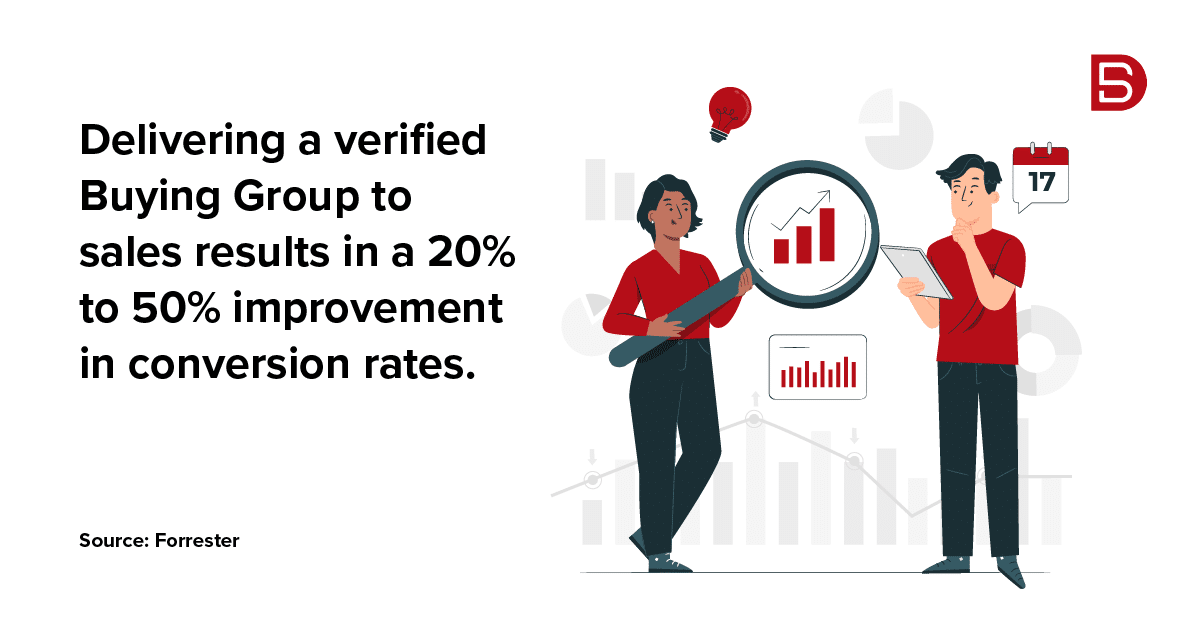
What is Buying Group Marketing?
Before we dive in, let’s take a moment to break down the concept of buying group marketing.
Buying group marketing targets and engages the right buying groups within businesses. Instead of selling to one individual, you sell to a group of decision-makers from different departments who come together with their priorities, concerns, and objections.
In a typical buying group, there are several stakeholders:
- CFOs: Focused on cost, ROI, and budget alignment.
- Procurement managers: Concerned with supplier reliability, terms, and the buying process.
- Operations managers: Interested in how the product fits into the company’s workflow and improves efficiency.
- IT directors: Prioritize the scalability, security, and compatibility with existing systems.
- Executives/CEOs: Looking at the long-term strategic value, growth potential, and market competitiveness.
These professionals aren’t just discussing and agreeing with one another. They have different needs, priorities, and sometimes even conflicting viewpoints. Your job is to connect with each individual in the group in a way that addresses their unique concerns while also reinforcing the group’s collective goal. That’s what buying group marketing is all about.
Why Is Buying Group Marketing So Important?
Now that we’ve understood buying group marketing, let’s dig into why it’s crucial to your B2B sales strategy.
The traditional approach to B2B sales typically involves a relationship with a single decision-maker, such as the CEO, CMO, or procurement manager. If you could persuade one person that your product was valuable, they’d decide, sign the check, and the deal was done. Easy, right?
But those days are gone.
Today, decisions are made by a team of stakeholders with different agendas. And each of them needs to be convinced. The reason? It’s all about mitigating risk. Even at the executive level, a single person doesn’t want to take full responsibility for a bad decision. Companies spread the responsibility and minimize risk by involving multiple team members in decision-making. Hence, there is more time, research, and voices to convince.
This dynamic also creates new challenges for you. Suppose you focus on one decision-maker at the expense of others. In that case, you’re leaving gaps in your sales process, which will be filled by competitors who have already figured out how to navigate the buying group organization.
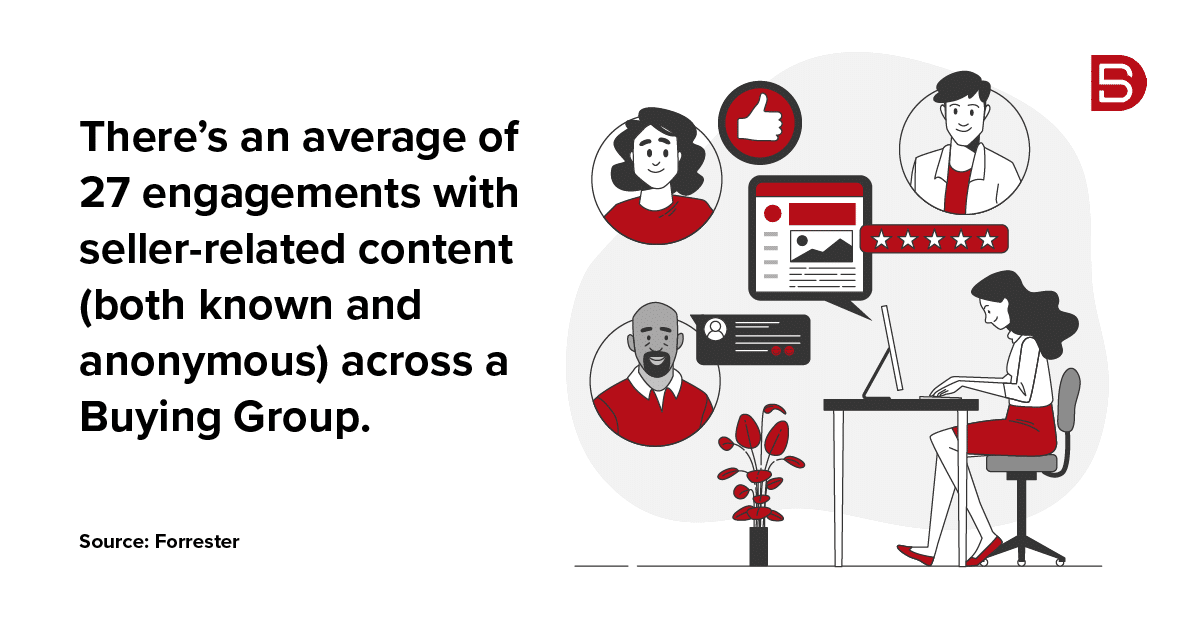
The Pain of Missing the Buying Group
Maybe this sounds all too familiar – You’ve made a solid pitch to the CEO. They seem interested. They even give you the green light to move forward. But then, you hear nothing. Days turn into weeks, and you’re stuck in limbo. You try contacting the CEO, but they’re suddenly too busy. What happened?
You don’t realize that the buying group was never fully on board. The CEO might have been interested, but they had to convince their team—especially finance, operations, and IT—that your solution was the right choice. And it may not have worked out in your favor.
You didn’t engage with the other group members, address their concerns, or speak to their pain points. And now, the decision is stuck. The deal is stalling. Your competitor, who targeted the buying group acquisition, is walking away with your lead.
That’s the pain of missing the buying group, and you need to avoid it if you want to succeed in today’s B2B sales world.
How to Acquire Buying Groups for Your B2B Sales?
So, what’s the solution? How can you acquire buying groups and turn them into loyal customers?
It starts with understanding the group dynamics and then strategically targeting the right individuals within the group. Here’s how you can do it:
1. Identify the Right Buying Groups for Your Solution
The first step to acquiring buying groups is understanding who you need to target. It starts with identifying the right companies that fit your solution well. Once you know who you want to sell to, you must find out who the decision-makers are.
This is where some research is essential. Look at the key players in the company. Find out who handles procurement, manages operations, and oversees IT. By identifying the right people, you can tailor your marketing and sales strategy to them.
2. Understand Each decision-makers Needs and Concerns
This is where most salespeople fail. They don’t understand the different concerns of each individual in the buying group. However, each person has a different set of priorities.
For example:
- The CFO is focused on the numbers. They want to know how your solution will impact their budget and the return on investment.
- The IT director considers security, scalability, and how your solution integrates with the company’s existing systems.
- The operations manager is concerned with day-to-day efficiency and how your solution will improve workflow.
Your job is to understand what matters most to each person and tailor your messaging accordingly. Speak to their pain points and show them how your solution solves their unique problems. If you can do this, you’re one step closer to gaining the support of the entire buying group.
3. Create Multi-Channel, Targeted Campaigns
A one-size-fits-all approach won’t work when you’re targeting buying groups. You need to create multi-channel, personalized campaigns for each group member. Reach out to each decision-maker in a way that speaks directly to them through email, LinkedIn messages, webinars, or even face-to-face meetings.
This isn’t about sending generic emails to everyone involved. It’s about crafting specific messages that address each person’s needs. Show them that you understand their role and challenges and that your solution will benefit them.
4. Build Relationships and Engage Early
Another crucial aspect of acquiring buying groups is building relationships with each stakeholder early in the sales cycle. Start by engaging with those who influence the decision, even if they’re not the final decision-makers. Establish a rapport with them and create trust. This will give you more leverage when it’s time for the final decision.
Don’t wait until the last minute to reach out. Get involved early in the process. Provide value through resources, insights, and thoughtful conversations. The earlier you start building relationships, the stronger your position will be when closing the deal.
5. Close the Deal with a Consensus
When it is time to close, you’ll need to ensure everyone in the buying group is on board. This is where your earlier work pays off. If you’ve effectively addressed each stakeholder’s concerns and positioned your solution as the best option for everyone, you’ll have the support you need to seal the deal.
Don’t be afraid to ask for confirmation from each decision-maker. This step is crucial in ensuring the entire buying group is aligned and ready to move forward.
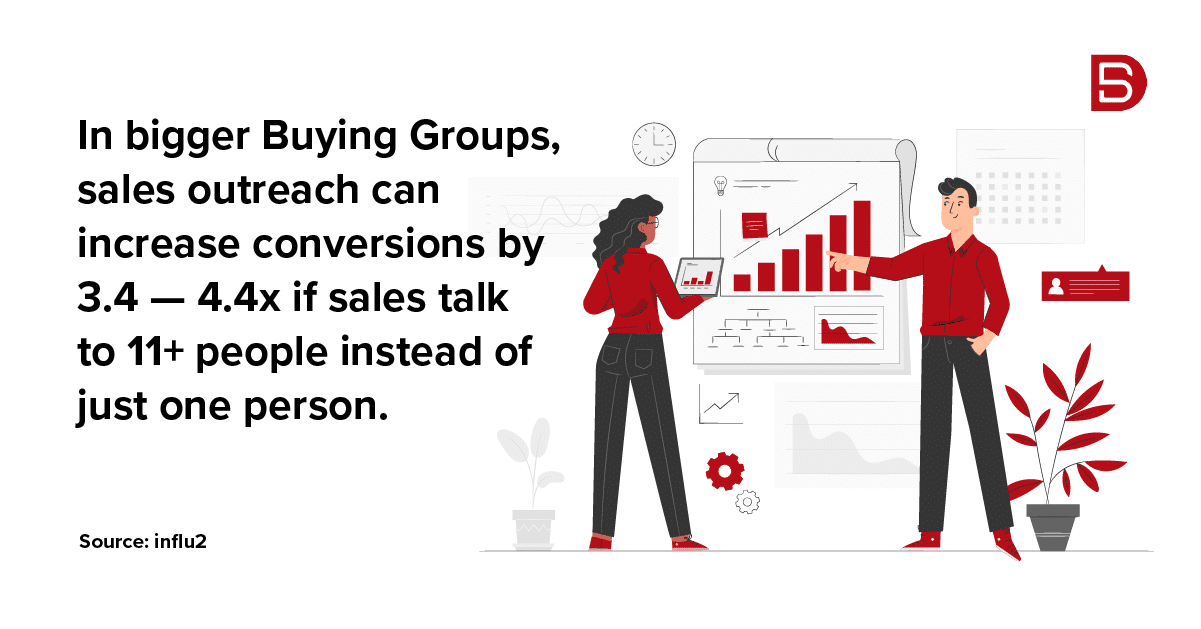
The Long-Term Benefits of Buying Group Acquisition
The long-term benefits will be significant if you successfully implement buying group marketing and acquisition strategies. Here’s what you can expect:
Higher Win Rates
When you engage with the entire buying group, you increase the likelihood of closing the deal. Each group member is more likely to feel confident in their decision.
Faster Sales Cycles
By addressing all concerns up front and building early relationships, you accelerate the decision-making process.
Loyal, Long-Term Customers
When you meaningfully engage with a buying group, you position yourself as a trusted partner, not just a vendor. This leads to stronger, longer-lasting relationships.
Final Thoughts
It’s Time to Get Smart with Your B2B Sales Strategy
You’re already behind the curve if you are still considering selling to one person. The future of B2B sales is all about buying groups. To succeed, you need to understand the dynamics of these groups, tailor your message to each individual’s needs, and build relationships early.
The good news is that it’s not that complicated. Once you start focusing on buying groups, you’ll see an increase in your win rates and sales cycles. Don’t let your competitors steal the spotlight—take action today and acquire buying groups like a pro.
So, what are you waiting for? Get out there, engage the group, and win the deal.
Now that you understand the importance of buying groups, you don’t have to take this journey alone. You can partner with Demand Generation service providers who will take the hassle out of acquiring buying groups and provide you with ready-to-convert leads.
Email us at marketing@datamaticsbpm.com, and we will help you effortlessly reach your targeted buyers group.

Paul van de Kamp

